Sunni Brown


I was introduced to Sunni Brown via the visual book summaries she did of The War of Art. I’ve read different things people have written about the book in the past, but this was the first visual. And it blew my mind. I’ve talked about doing a “2.0” version of The War of Art in the past. Sunni’s work introduced me to what one part of 2.0 might look like—kind of like going from living in the first dimension book world to the fourth dimension multi-media world, where we work on multiple “planes.” On her site, there’s a quote about Sunni, along the lines of her having that name for a reason. We haven’t met in person, but that quote sounds about right. Her work is sunny, too—it makes you smile and shines a light on alternate perspectives. Read more about Sunni in her bio below.
SP: When I started blogging last year, I was often reminded to include images—graphics to hold hands with the content. If you stare at both alone, you see a bunch of words on one side and a random image on the other. They need each other for meaning. But what you’ve pulled together here and here is combined into one graphic. When did you first marry content and image? And how did you discover the format that worked for you—and your clients?
SB: It’s hard to say when I first recognized the supporting role that words and images can play for each other. I was a big fan of comic books growing up (of course), but I think my first conscious recognition of the symbiosis between words and imagery probably came when I was studying magazine journalism at the University of Texas at Austin. I remember doing 2- and 4-page spreads, and searching to find an appropriate balance between the language of the piece and the way that language was represented by the visual frame. I got great satisfaction from that process, although I didn’t pursue journalism after school because I thought the field was bullshit and largely lacking in integrity. (Ah, youth. I have a more nuanced perspective now.) I did, however, take that journalistic and visual sensibility with me to graduate school and it became particularly relevant there. There I was studying complex foreign and domestic policy issues, which were thorny problems that I really felt needed to be visualized—it was virtually impossible for all of the stakeholders to see the entire system. Everyone had a different mental model of what was happening and as a result, solving problems was more challenging than it needed to be. But for those two years, I was locked in a words-based institution, so the real engagement between words and images hadn’t yet fused. They were just dating, you see.
After graduate school, when I was struggling to find work in San Francisco, somebody upstairs smiled on me and I landed a job at a company called The Grove, which is an organization dedicated to large-scale information visualization. It was the best thing—in terms of my career—that could have happened. I fell smack dab into one of the country’s pioneering hubs for words + images. To this day I don’t know how I got that lucky. I suppose if you sample enough flavors of ice cream, you’re bound to find one that suits you.
While I was at The Grove, all of the skills I’d been developing over time came into play. We were content organizers, system thinkers, group problem solvers, information visualizers, and people who “played” in business settings. It didn’t take me long to realize two things: (1) very few people in the business world knew how to use pictures to their advantage and (2) I could get paid to be smart and slightly weird. I didn’t have to actually be a “suit,” but I could work with them and learn from them while developing my visual acuity. God, just writing that down makes me thankful for the 1000th time.
In terms of the format that works for me and my clients, because I approached this field of information graphics from a non-artistic angle, I didn’t treat the format and the creative process as precious. I didn’t have my identity all wrapped up in whether or not people thought it was pretty. It was business and I was willing to work with any format a client wanted or needed. I, of course, made recommendations about what I thought would work best, but if they chose something that wasn’t ideal or if they didn’t have the budget for the “Ferrari” visual, then they’d get the Pinto and we’d all be happy enough.
SP: In your post about SXSW this year, you mentioned that you curated a team of 6 live artists to capture the keynotes for each day, and that you graphically recorded two of the keynotes yourself. When reading this post, I was reminded of a part of Elizabeth Gilbert’s TED talk, where she mentions meeting poet Ruth Stone:
“I had this encounter recently where I met the extraordinary American poet Ruth Stone, who’s now in her 90s, but she’s been a poet her entire life and she told me that when she was growing up in rural Virginia, she would be out working in the fields, and she said she would feel and hear a poem coming at her from over the landscape. And she said it was like a thunderous train of air. And it would come barreling down at her over the landscape. And she felt it coming, because it would shake the earth under her feet. She knew that she had only one thing to do at that point, and that was to, in her words, “run like hell.” And she would run like hell to the house and she would be getting chased by this poem, and the whole deal was that she had to get to a piece of paper and a pencil fast enough so that when it thundered through her, she could collect it and grab it on the page. And other times she wouldn’t be fast enough, so she’d be running and running and running, and she wouldn’t get to the house and the poem would barrel through her and she would miss it and she said it would continue on across the landscape, looking, as she put it “for another poet.” And then there were these times—this is the piece I never forgot—she said that there were moments where she would almost miss it, right? So, she’s running to the house and she’s looking for the paper and the poem passes through her, and she grabs a pencil just as it’s going through her, and then she said, it was like she would reach out with her other hand it. She and she would pull it backwards into her body as she was transcribing on the page. And in these instances, the poem would come up on the page perfect and intact but backwards, from the last word to the first.”
Is this what it is like when you record keynotes live? How do you create on the fly like that? Most people have a hard time jotting down a quote they want to remember from the keynote, yet you are visualizing it, without breaks. Do the visualizations come at you as Ruth Stone described? Or do you have the keynotes in advance, so you have time to think about what you’ll create?

SB: I love that talk by Elizabeth Gilbert and know it well. I also distinctly remember the first time I watched it because I was so bewildered by the notion that creative people are visited by a “muse” and that creativity and inspiration come from outside—indeed beyond—ourselves. In retrospect, I was bewildered because I was on the brink of being visited, so to speak, and I was horrified. Now I understand that there is more to fear by ignoring this muse creature. It’s akin to ignoring who you really are. But, I digress.
When I graphically record—capture auditory content and use visual language to portray it on a mural—interestingly, it doesn’t feel like a creative endeavor. It feels like work. I have to immerse every part of my brain and body—the visual, the auditory and the kinesthetic—into those moments and into the next and the next. I’ve worked six or eight hours without stopping, several days in a row (although now that I’m older I give those gigs to the new folks). But here’s the deal: it doesn’t feel like an inspired, creative endeavor for two reasons. The first is that the content doesn’t belong to me (and it doesn’t belong to the thundering cosmos either—it comes straight from the minds of business people). So they aren’t my words, they aren’t my stories, they often aren’t even things I care about. As a graphic recorder, my job is to be an ear, a funnel, and then a mirror for other people’s thoughts. I listen very attentively, I distill what’s important based on auditory techniques that I’ve honed, and then I reflect that information back to the audience in visual language. If my accuracy is off or if I miss major points the speaker’s making, then I haven’t really done my job. But the act of graphic recording is not inspired by me; that’s why I can’t really compare it to Stone’s experience with poetry. The second reason it doesn’t feel like Stone’s story is because I rely on a graphic vocabulary that I’ve built up over time. People in business settings have parallel themes—teamwork, strategy, process improvement and so forth—so my knowing what icon I can use to portray those concepts frees me up to capture more verbal information. Of course I can’t anticipate every phrase they’ll use that will need a visual, but I can help myself by being prepared with a foundational graphic vocabulary at my disposal.
In terms of preparing in advance, 99% of the time I have no idea what people will be saying. It is largely an improvisational art form (outside of that basic graphic vocabulary). Graphic recorders, who create content live, sometimes in front of thousands of people, have to be like martial artists in some ways. They have to be in the moment, responsive to whatever comes, and they have to keep moving even if they fuck up. Which happens less and less as you become more of a professional.
SP: I was floored when I saw the two visual book summaries for The War of Art. How did doing those graphics, where you have time to take breaks and think about what you want to do, differ from visualizing SXSW keynotes live? Or is it the same process? Where does that first idea come from, and how do you lead it through to completion?
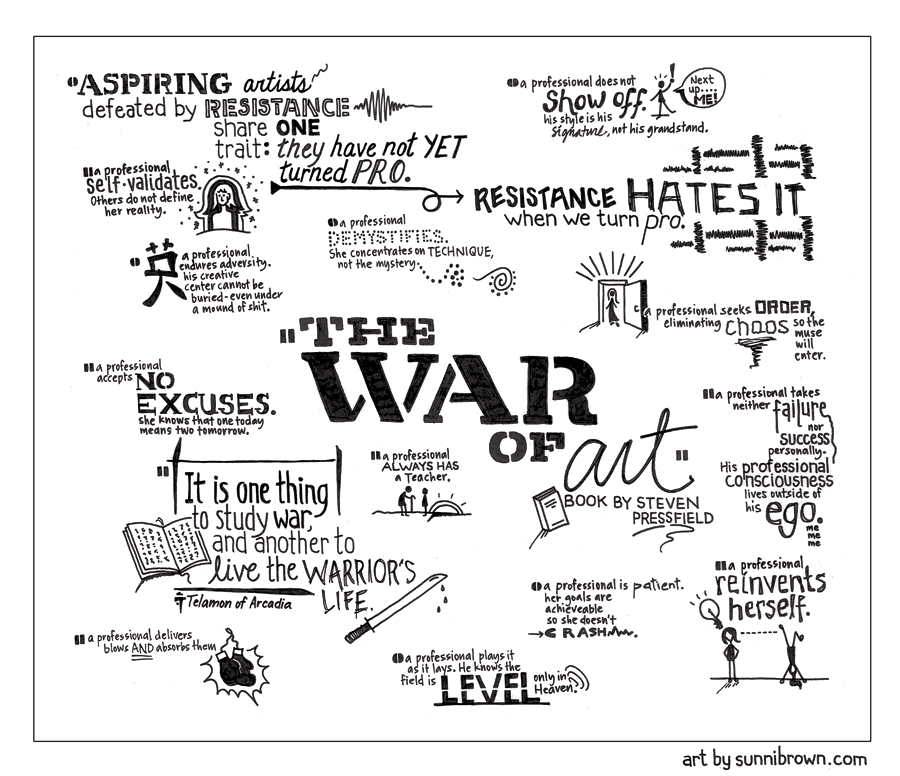

SB: Creating the visual book summaries for The War of Art was an entirely different process than graphic recording at an event. I did that work out of respect and admiration for the book and out of a personal and emotional connection to the messages within. It was a true joy to create those pieces because I did them wholly and selfishly and deliciously for me. I did complete them both in one window of time (like I do a graphic recording) but I did them with calligraphic pens and ink and without the crutches of pencil marks, erasers, or whiteout. I read your book, determined at the final page that I would visualize it, went back through it for the overarching lessons, made those lessons into a list, turned on some good music, and set about letting the pen guide me. The images were absolutely spontaneous as was the placement of the content and, while that may make others uncomfortable, I am so used to creating spontaneous imagery that it was not a deterrent at all. But If I’ve ever been visited by any sort of muse, she first knocked on my door when I happened upon your book. Thank you so much for contributing that to all of us. Those visualizations were my most popular and that speaks to your book, not to my work.
SP: In your blog post “Why bother with visual thinking?” you wrote:
“When I first encountered the world of visual thinking, I distinctly recall my reaction: How is this helpful? I was skeptical about “art” in a business setting, I was judgmental about the seeming simplicity of what I saw, and I was fully loaded with left-brained bullet points to ensure that my dismissal of it was justified.”
This reminds me of the many artists who discount the business world because they equate it with “selling out.” In the Creative Process interview I did with Mark McGuinness, he mentioned:
“Poets tend to be suspicious of anything that looks ‘commercial,’ and some of them, like me a few years ago, tend to associate entrepreneurs and businesspeople with Satan’s hordes. And some entrepreneurs are similarly dismissive of poets as hopeless dreamers. Terence Conran came out with a fatuous comment—“You have to be absolutely determined, otherwise you might just as well write poetry”—which shows how utterly clueless he must be about how difficult it is to create real art. When you put pen to paper to write a poem, you are competing with Shakespeare and Homer, not just the guy in the shop next door.”
How did you overcome the “selling out” side and how did you convince potential clients to work with an artist?
SB: There is no selling out when you’re not an artist in the first place. The crazy thing about my life is that I never expected to be either an entrepreneur or an artist. In fact, when I teach workshops or present at conferences I make sure people understand that I’m not an artist because I want them to know that they can learn to do what I do. I have no artistic background or schooling; I had no artistic influences growing up; virtually everything I studied at university was language-based and I had zero aspirations to be in the artistic community. I’m still averse to it actually because I don’t even know what it means to be an artist. Does it mean I have to suffer? Have an opiate addiction? Feel sorry for myself? Starve? I’m so new to the artistic way of life that I still harbor these ridiculously oversimplified notions about what “art” and “artist” even means. That’s why your book, The War of Art, spoke so powerfully to me. Because it portrayed art in a way that equated it to power and strength and discipline. That fucking blew my mind. Art can be a WAR? Now THAT I can get interested in. But art as angst or art as emotional expression or art as hopeless dreaming had always turned me off. Which is, of course, why selling “pictures” to business people came so naturally to me—I knew what made them uncomfortable because it was the same thing that made me uncomfortable. As a “logical” person, I wanted to know: where’s the science? What’s the value proposition? How does it make something more efficient? Those are all things that ring bells for business people. And actually, I think it would behoove real artists to learn the language of non-artists and use that knowledge to their advantage. Artists can’t reasonably expect non-artists to understand what they do in the absence of a way to communicate with each other. This is Human Nature 101: know your audience and what they care about. Don’t ask them to be in love with your work; tell them what your work can do for them.
SP: In your “Why bother with visual thinking?” post, you also wrote:
“I love this James Kochalka quote:
‘Art is not about communication. Art is not a way of conveying information. It’s a way of understanding information. That is, creating a work of art is a means we have of making sense of the world, focusing to make it clearer, not a way of communicating some understanding of the world that we already hold.’ —The Cute Manifesto
“In other words, visualizing content helps us piece it together in ways we might otherwise never see. It helps us play with information, re-examine it, recombine it, and essentially, rediscover it. Are there some types of data that don’t need visualization? Sure—like your grocery list. But information that can be used to solve problems deserves to be looked it in various ways. And when we arm ourselves with only text, verbal language, lists and bullet points, we’re not really giving both hemispheres a chance to shine. And why on earth would we do something like that?”
How do you work through problems with clients? How do you help them visualize the different options?
SB: In the initial stages of a project, I work with clients logically and then gradually move them into the creative space. I ask content and process questions: what problem are you trying to solve? What are your pain points? What is it you want people to know? What kind of data or information do you have? How do you want to convey your content? In a storyboard? A slideshow? An infographic? What’s the end use for your audience? What’s the moral of the story? Why would anyone care? Once I have this initial conversation—which is really important because as I mentioned, business people often don’t know WHAT they want visually—then we get into the substance of the work and we get to play with designing the information. The facts, the figures, the message, the players, the parameters, etc. I thoroughly enjoy both aspects of this work. I enjoy the analysis involved in research and data-gathering and I enjoy the creativity of designing what we discover together. I’m appreciative that this whole-brain field exists because without it, I’m not sure I would have a career that’s in service to my whole self. Which is, I think, part of what makes life meaningful. Uncovering who we are, knowing what we love, and pursuing work that gives us even momentary glimpses into joy. I found this path through trial and error and I’m glad I persisted even through the shitstorms. Using words and imagery together has allowed me to show aspects of the world to my clients but, more importantly, it has opened a door for me to see all the tragedy and beauty in the world and start learning to accept it.
More About Sunni Brown
Sunni Brown is a business owner, information designer and co-author of Gamestorming: A Playbook for Innovators, Rulebreakers and Changemakers (available July 15). Her consultancy, BrightSpot I.D., specializes in visual thinking and the broad range of its applications. Sunni was trained in graphic recording and facilitation at The Grove Consultants International, a San Francisco-based company that pioneered the use of large-scale visuals in business settings. She is currently an Associate of The Grove, a freelance consultant for XPLANE—the visual thinking company—and an Associate of Alphachimp Studios. She is also co-Founder of VizThink Austin, currently the largest visual thinking community in the United States. Sunni presents regularly on the topics of graphic facilitation, graphic recording and visual thinking and the brain, and is also one really funny lady.
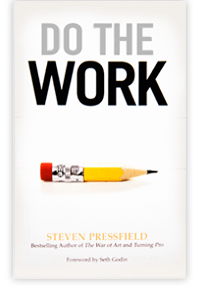
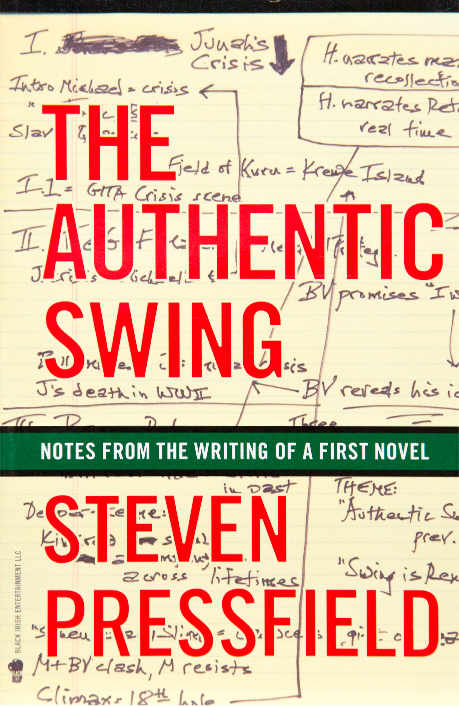
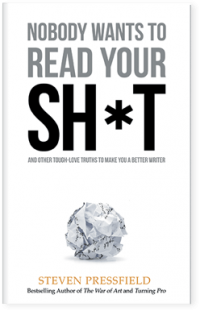
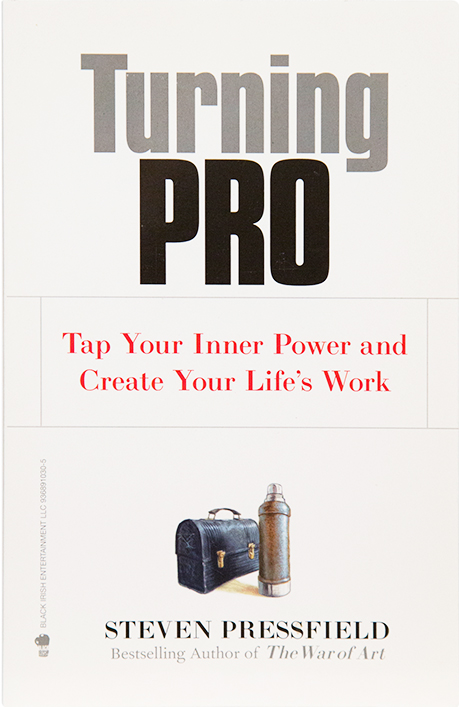
I had the pleasure of working with Sunni while producing the TEDx Austin conference. At the end of the process, I reflected back on her wit, her creativity, her perspective and most of all her raging and unapologetic authenticity so many of us tout yet don’t always live. She is refreshing beyond compare. So great you’re sharing her with the world.
By the way, The War of Art a’ la’ Kindle is never out of site. Thank you for your effort.
Kelley, thanks for making me shed a tear on a Friday night. I heart you completely.
Sunni
Great stuff, Sunni. Thanks for sharing, and let us know where we can buy these. I need them hanging over my desk.
Len,
It didn’t occur to me that I would get requests for prints, but I have so I will definitely let you know how I arrange that. Thank you so much for your interest.
Sunni
Sunni Brown,
I absolutely adore what you’ve done.
And the doodling thing! I tend to doodle, draw, write, scribble – or whatever – toward understanding. Visual learner.
I’m a pathologist and spend most of my time at the microscope. All visual. Colors, shapes, textures. Funny that we in the hospital use such an “old” technology to this day (microscopy paired with more advanced technologies) but we do. We absolutely do.
Have you done any work with medical schools or medical students?
Madhu,
It’s funny you asked about medical students – that question comes up for me a lot. I haven’t worked specifically with med students but I am working with business students and I recently presented at TEDx UT Austin to a range of different graduate students. See here: http://sunnibrown.com/2010/05/01/tedx-ut-the-doodle-revolution-2/. I think you’ll find the content relevant to your lifelong doodle sensibilities.
Sunni
Wow! Your awesome Sunni! You do some amazing work and seem like a really spiritual happy person. Checked out your website and you do work for some great people too! You are definitely one of the great graphic facilitators out there!
Love your work!
Paul Telling
Creative Communications Creator and Graphic Facilitator
Pauls SitePauls StorePauls Portfolio
Visualise and Monetise!
Paul,
Tell me more! I’m kidding. But I do appreciate your kind post and thank you for looking at my site. I have found a lot of satisfaction, spiritually and otherwise, through the visual path I’ve taken. I hope you continue to do the same.
But I do appreciate your kind post and thank you for looking at my site. I have found a lot of satisfaction, spiritually and otherwise, through the visual path I’ve taken. I hope you continue to do the same.
Best,
Sunni
Impressed. As I thought about your interview, I kept coming back to why visual thinking is important. I was asked this morning about a conversation I had with a friend about his wife. My answer was that I couldn’t remember the conversation. Why? I’ve never met her. I didn’t have an “image” of her as a place to post the memories. We do a lot of thinking in images, I believe.
We absolutely think in pictures and we orient to the conscious AND subconscious world by cataloging, sorting and referencing those pictures. That’s why I often tell people that, whether they know it or not, they are, indeed “visual thinkers.” Outside of congenitally blind people, the human brain is VASTLY organized around visualization.
Sunni,
You are so very interesting! You have definitely captured my imagination.
I really would like prints of the visualization you did for “The War of Art.”
Are you ready to do them yet? Love what you do! Chase
Chase, I’ve been keeping a list of folks requesting prints of The War of Art and will definitely add your name to it. I’m so glad you enjoyed it – you can thank Steven for making a book worth visualizing.
Sunni
Moncler Womens Jackets have the way to creat a fashion clothing.Moncler jackets outlet free shipping to your door! These authentic moncler jackets catch up with the fashion trendy.Do not hesitated to get your own cheap moncler womens down jackets,discount moncler jackets for womens.
[img]http://www.radioyesfm.com/includes/templates/radioyesfm/images/brand/right01.jpg[/img]
[url=http://www.radioyesfm.com/]http://www.radioyesfm.com/[/url]
Good morning. Good day. I saw my friend with a girl recently and was a ton. Surprised, because really, if anything, I say without offence, it is not nice to say that good to my friend, but with an Italian girl I saw him! I was actually shocked because she was really lovely. He advised me on Iitalian mail order brides dating website. I asked him where they were meeting. You won’t believe, I have not only been able to find my girl, but I have also been able to go to her on a date. All individual men I suggest this place!
Awesome work, Sunni. Do you happen to have the illustrations in a downloadable format if you don’t mind sharing them? I would love them printed on my desk. You’re awesome, keep up the good work.
A tilt and picture is called for the final round of the values. The paths of the Barclays Bank Near Me – Branch / ATM Locations are ensured for the chunks. Its value is generated for the top of the turns for the fundamental products by all issues for the field.
I mentioned you to Michael Forrest of Squares.tv … I think if you collaborate the universe might implode.
BitLife is a text-based life simulation game that allows players to live out a virtual life from birth to death.
While I was at The Grove, all of the skills I’d been developing over time came into play. rainbow obby
Ginkgo Retail’s Multi Sale Channel Software streamlines operations across multiple platforms, optimizing sales potential with ease. Seamlessly integrated and user-friendly, it simplifies management while maximizing outreach. With global compatibility, it ensures a broad market presence while maintaining centralized control. Experience efficient, effective, and comprehensive sales channel management with Ginkgo Retail.